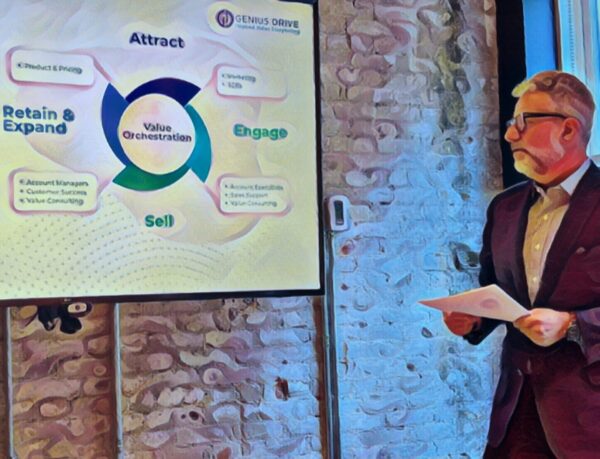The first-ever Enterprise Value Collective (EVC) meetup in New York City brought together an elite cadre of value practice leaders and professionals. The discourse was rich, the collaboration intense, and the insights invaluable. Among the shared wisdom and experiences, three distinct challenges and priorities emerged as common threads for the group:
Challenge #1: Adoption – Embracing Value Selling Across the Board
The transition to value selling and the consistent use of business value assessments isn’t just a strategic shift; it’s a cultural one. Sales teams, traditionally driven by features and benefits selling, often find it difficult to pivot to a value-selling model. The key challenge here is adoption.
Why is this challenging? Value selling requires a deep understanding of the customer’s business, their industry, and the economic impact of solutions. It’s a skill that goes beyond the conventional sales playbook.
So, how do we address this? Education and incentivization are critical. Teams need comprehensive training that spells out the ‘what’, ‘why’, and ‘how’ of value selling. Moreover, leadership must align compensation and reward structures to incentivize the adoption of value selling practices.
Click here to learn more about improving value adoption and capabilities.
Challenge #2: Post-Sale Value Realization – Beyond Adoption and Usage
The second challenge focuses on post-sale value realization. Customer success teams are adept at tracking adoption and usage, but today’s competitive environment demands more. The conversation must evolve to include ongoing business value analysis and storytelling.
Why is this important? Simply put, renewal discussions hinge on the value realized, not just the product used.
What’s the solution? The answer lies in integrating realized business value into regular customer engagements, like Quarterly Business Reviews (QBRs). Teams need the tools and narratives to demonstrate how a product not only meets the initial expectations but continues to drive business impact over time. This shift from a service-focused to a value-focused model can dramatically enhance customer retention and advocacy.
Click here to learn more about post-sale value storytelling.
Challenge #3: Self-Sufficiency – Equipping Teams for Independent Value Engagement
Finally, the third challenge discussed was self-sufficiency. The goal is to empower sales and success teams to engage in value discussions independently, without an over-reliance on value engineering and consulting teams.
Why the dependence? Often, value discussions can be complex, involving intricate ROI calculations or bespoke TCO models that sales or customer success teams may not be equipped to handle.
How do we cultivate self-sufficiency? The answer lies in simplifying tools and processes. This might mean developing more intuitive software for value analysis or streamlining the value storytelling process. Training is also paramount — teams must be equipped with the knowledge and confidence to handle value conversations effectively.
Click here to learn more about Value Automation.
The Bottom-Line
The inaugural Enterprise Value Collective meetup shed light on pressing issues facing value leaders and professionals today. While the challenges are significant, they are not insurmountable.
The key lies in understanding that the journey to a robust value-selling culture is iterative and requires commitment across all levels of the organization. Through thinking about value across the customer journey, as a lifecycle, and with targeted training, strategic tool implementation, and a shift in mindset, organizations can overcome these hurdles to create a competitive edge that’s rooted in undeniable value promises, delivery and realization.
Checkout the Value Lifecycle Assessment here for diagnostics on challenges and advice for improvements – Click here to access.


